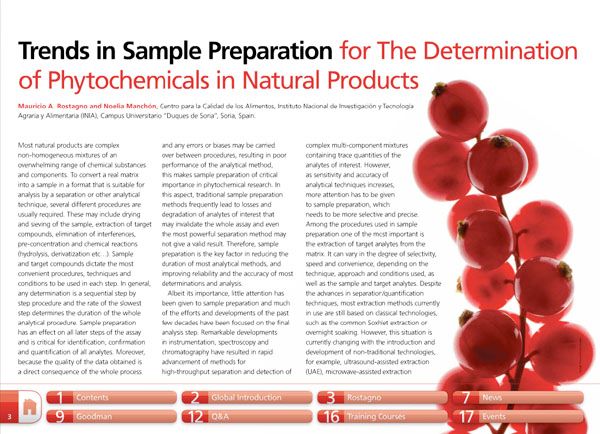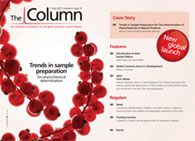Trends in Sample Preparation for The Determination of Phytochemicals in Natural Products
Discussing trends in sample preparation for the determination of phytochemicals in natural products.
Most natural products are complex non-homogeneous mixtures of an overwhelming range of chemical substances and components. To convert a real matrix into a sample in a format that is suitable for analysis by a separation or other analytical technique, several different procedures are usually required. These may include drying and sieving of the sample, extraction of target compounds, elimination of interferences, pre-concentration and chemical reactions (hydrolysis, derivatization etc...). Sample and target compounds dictate the most convenient procedures, techniques and conditions to be used in each step. In general, any determination is a sequential step by step procedure and the rate of the slowest step determines the duration of the whole analytical procedure. Sample preparation has an effect on all later steps of the assay and is critical for identification, confirmation and quantification of all analytes. Moreover, because the quality of the data obtained is a direct consequence of the whole process and any errors or biases may be carried over between procedures, resulting in poor performance of the analytical method, this makes sample preparation of critical importance in phytochemical research. In this aspect, traditional sample preparation methods frequently lead to losses and degradation of analytes of interest that may invalidate the whole assay and even the most powerful separation method may not give a valid result. Therefore, sample preparation is the key factor in reducing the duration of most analytical methods, and improving reliability and the accuracy of most determinations and analysis.
Thermodynamic Insights into Organic Solvent Extraction for Chemical Analysis of Medical Devices
April 16th 2025A new study, published by a researcher from Chemical Characterization Solutions in Minnesota, explored a new approach for sample preparation for the chemical characterization of medical devices.
Study Explores Thin-Film Extraction of Biogenic Amines via HPLC-MS/MS
March 27th 2025Scientists from Tabriz University and the University of Tabriz explored cellulose acetate-UiO-66-COOH as an affordable coating sorbent for thin film extraction of biogenic amines from cheese and alcohol-free beverages using HPLC-MS/MS.
Multi-Step Preparative LC–MS Workflow for Peptide Purification
March 21st 2025This article introduces a multi-step preparative purification workflow for synthetic peptides using liquid chromatography–mass spectrometry (LC–MS). The process involves optimizing separation conditions, scaling-up, fractionating, and confirming purity and recovery, using a single LC–MS system. High purity and recovery rates for synthetic peptides such as parathormone (PTH) are achieved. The method allows efficient purification and accurate confirmation of peptide synthesis and is suitable for handling complex preparative purification tasks.








